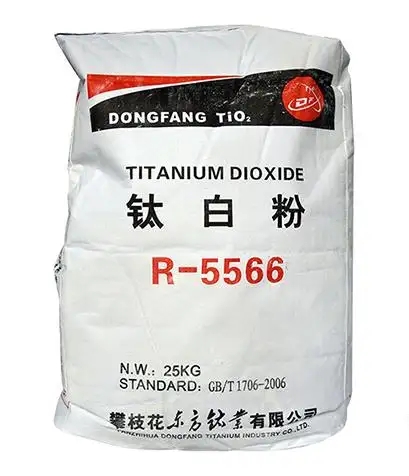
7 月 . 29, 2024 03:51 Back to list
Exploring the Photocatalytic Properties of Hybrid Nano Titania for Environmental Remediation Applications
Mixed Crystal Nano Titania A Promising Material for Future Applications
Titanium dioxide (TiO2), commonly known as titania, has garnered significant attention in various fields, particularly in photocatalysis, solar energy conversion, and environmental remediation. Its remarkable photocatalytic properties stem from its ability to effectively harness solar energy, making it a prime candidate for sustainable energy solutions. Recent advancements in material science have introduced the concept of mixed crystal nano titania, which enhances the properties of traditional TiO2 by incorporating different crystal phases and structural features.
Understanding Mixed Crystal Nano Titania
Mixed crystal nano titania typically consists of a combination of anatase and rutile phases, the two most common crystalline structures of titanium dioxide. Anatase is known for its superior photocatalytic activity, while rutile exhibits higher stability under extreme conditions. By synthesizing a mixed-phase titania, researchers aim to leverage the benefits of both forms, resulting in a material that not only retains high photocatalytic efficiency but also offers increased durability and resistance to degradation.
The synthesis of mixed crystal nano titania can be achieved through various methods, including sol-gel processes, hydrothermal synthesis, and vapor phase deposition. These techniques allow for precise control over the material's morphology, crystallinity, and surface area, which are critical factors influencing its photocatalytic performance. The nanoscale dimension further enhances the surface area-to-volume ratio, maximizing the active sites available for chemical reactions.
Photocatalytic Applications
The primary application of mixed crystal nano titania lies in its photocatalytic capabilities. Upon exposure to ultraviolet (UV) light, the material generates electron-hole pairs that can drive redox reactions. This process enables the degradation of organic pollutants in water and air, making mixed crystal nano titania an effective agent for environmental remediation. Studies have shown that materials with a balanced anatase-rutile ratio outperform pure phases in decomposing hazardous substances, such as dyes and pesticides, thus proposing a sustainable alternative for wastewater treatment.
mixed crystal nano titania

Moreover, mixed crystal nano titania has shown promise in solar energy applications. It can be used in photovoltaic cells to enhance the efficiency of light absorption, thus improving energy conversion rates. Furthermore, its ability to function in visible light opens opportunities for harnessing solar energy beyond traditional UV wavelengths.
Challenges and Future Directions
Despite its potential, the commercialization of mixed crystal nano titania faces several challenges. The synthesis methods often require stringent conditions and can lead to variability in product quality. Moreover, understanding the precise relationship between crystal structure, surface chemistry, and photocatalytic efficiency remains an ongoing area of research.
Advancements in characterization techniques, such as high-resolution transmission electron microscopy (HR-TEM) and X-ray diffraction (XRD), are crucial in elucidating these relationships. Researchers are also exploring the incorporation of dopants or the development of composites to further enhance the performance of mixed crystal nano titania.
Conclusion
Mixed crystal nano titania stands at the forefront of materials science, showcasing immense potential for a wide array of applications. Its unique ability to combine the advantages of different crystal phases makes it a valuable contender in the fields of photocatalysis and renewable energy. As research progresses, overcoming the challenges associated with its synthesis and application will pave the way for its integration into real-world technologies, ultimately contributing to a cleaner and more sustainable future. The journey of mixed crystal nano titania is still unfolding, and its full potential remains an exciting prospect for scientists and engineers alike.
-
Lithopone for Plastic & TiO2 R-5568/SK-6658 Masterbatch Solutions
NewsMay.30,2025
-
China Leading Rutile TiO2 Manufacturer - R5566 & R996 Grades Available
NewsMay.30,2025
-
High-Purity Anatase & Rutile TiO2 Powder Trusted Manufacturer
NewsMay.30,2025
-
High-Purity Anatase Products Trusted Supplier & Manufacturer
NewsMay.29,2025
-
Best Price Eco-Friendly Rutile TiO2 Supplier & Wholesale Factory
NewsMay.29,2025
-
Chinese Anatase Titanium Dioxide for Ceramic Glaze Reliable Supplier
NewsMay.29,2025
